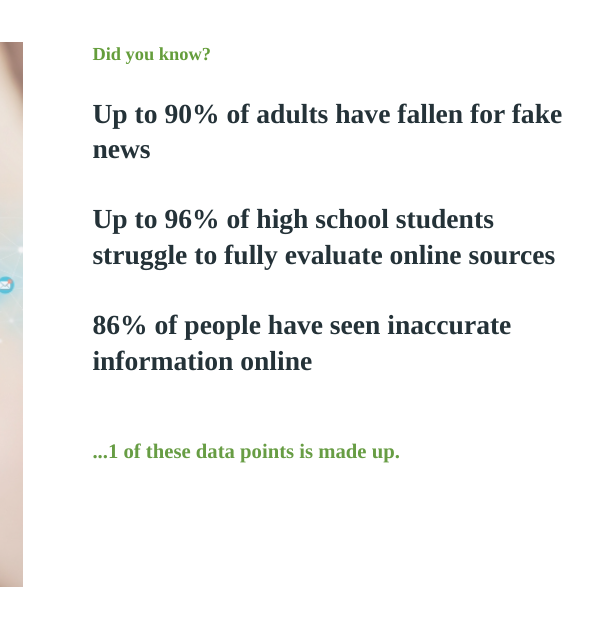The truth is finally revealed! I get a lot of questions about the infographic we have on our homepage.
It states:
Up to 90% of adults have fallen for fake news
Up to 96% of high school students struggle to fully evaluate online sources
86% of people have fallen for inaccurate information online
…1 of these data points is made up.
It’s fun and grabs your attention. The stats are surprising, but kind of not surprising at the same time. Extreme, but believable. Especially if you’re someone who found this site because you’re concerned about digital citizenship skills. You know the digital world is a complicated place, so you’re predisposed to believe shocking facts like these.
The Truth
The first stat “Up to 90% of adults have fallen for fake news” isssssssssssssss…..TRUE! (sort of…it’s from a non-scientific poll…of Canadians only)
https://www.cbc.ca/news/politics/fake-news-facebook-twitter-poll-1.5169916
The second stat “Up to 96% of high school students struggle to fully evaluate online sources” issssssssssssss….FALSE! (while it’s true that high school students do struggle to fully evaluate online sources, we’ve never found a scientific study that puts a valid percentage on how many)
https://ed.stanford.edu/news/stanford-researchers-find-students-have-trouble-judging-credibility-information-online
The third stat “86% of people have fallen for inaccurate information online” isssssssss…TRUE (although this stat is from 2019 and probably woefully out of date. Always keep an eye on how timely information online is!)
https://phys.org/news/2019-06-percent-internet-users-duped-fake.html
The point of the graphic is to show you that even things that seem plausible need to be evaluated. You need to dig much deeper to find out if the information is accurate and the context it’s found in.
Happy searching internet friends! Keep supporting each other and building digital citizenship skills with Kermode.



